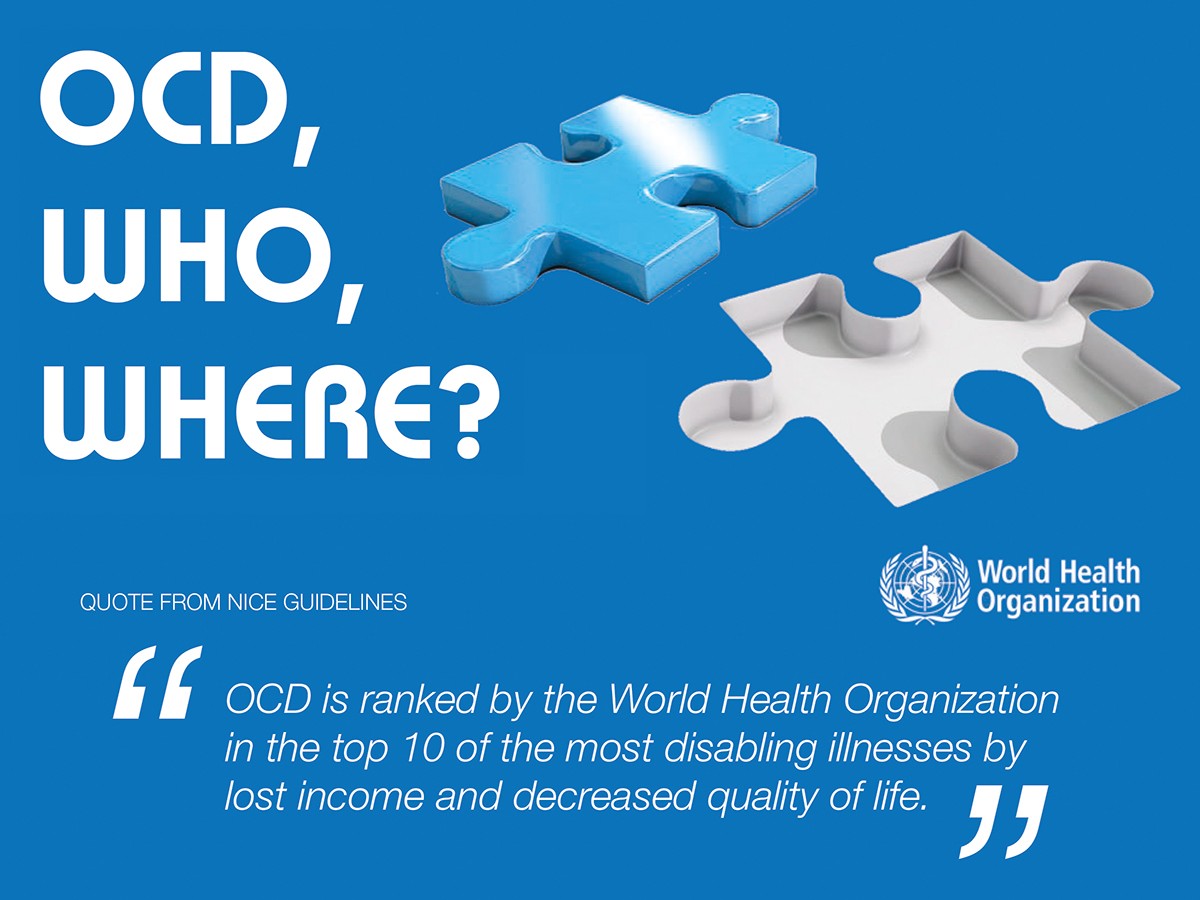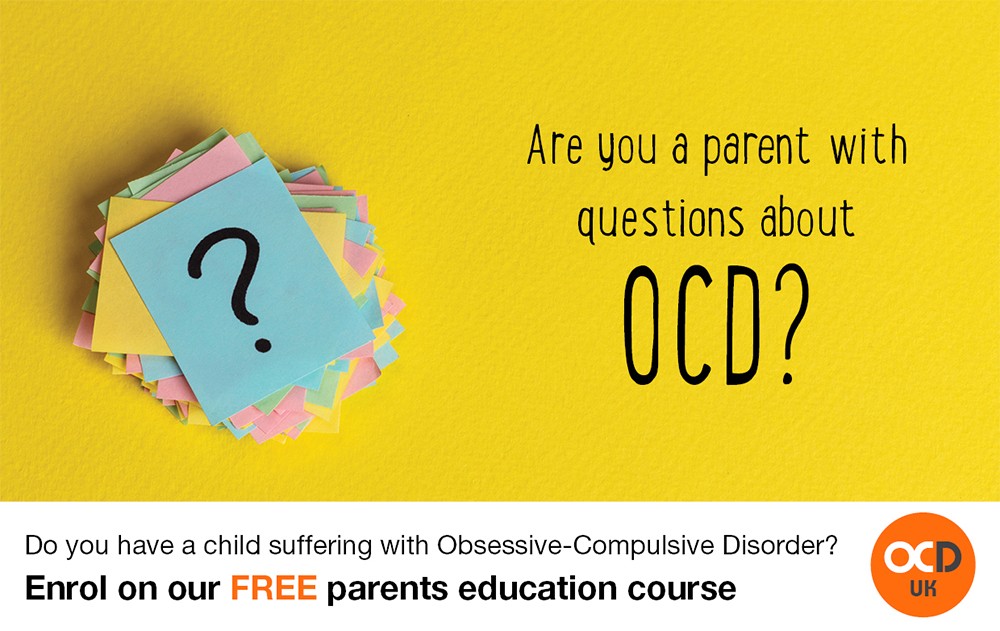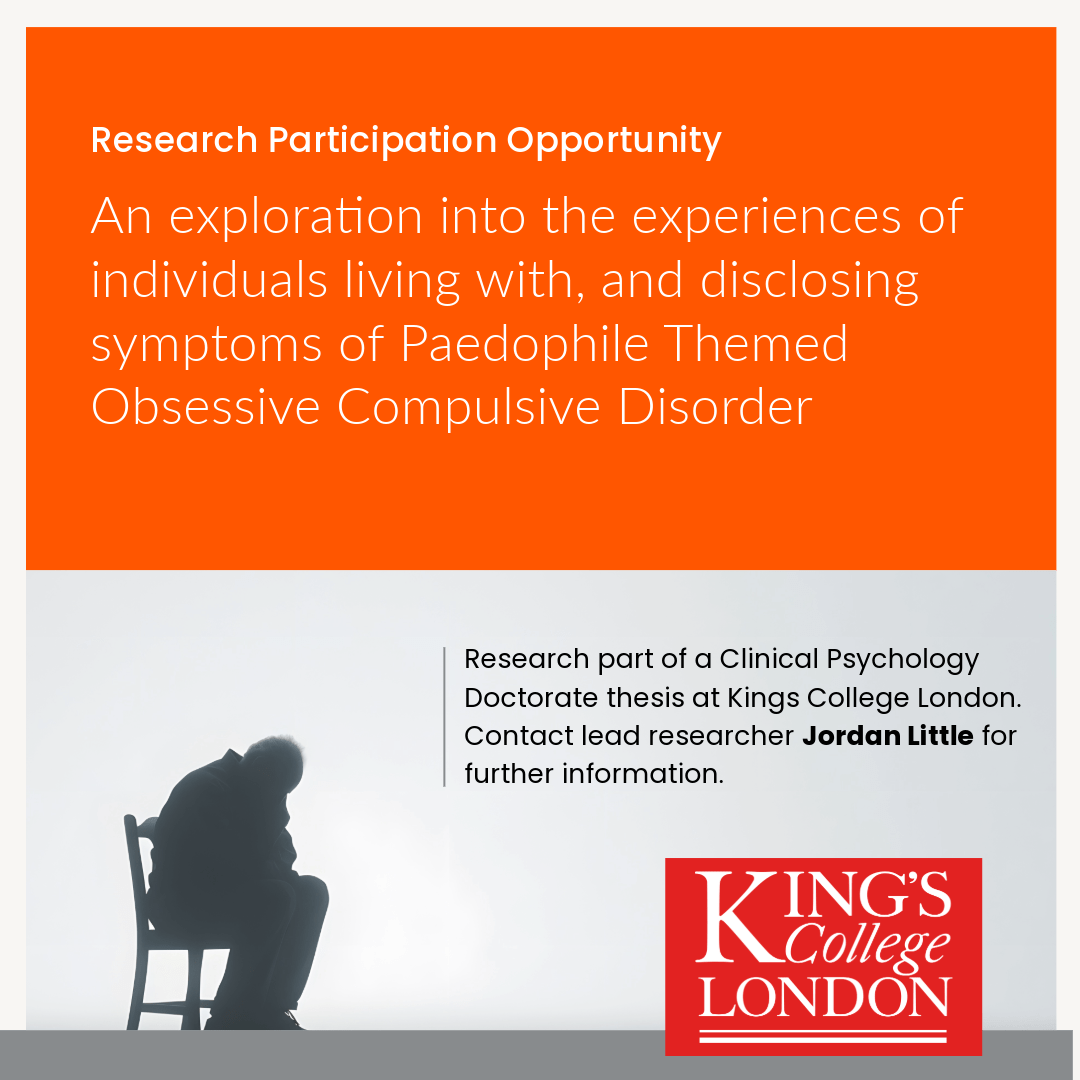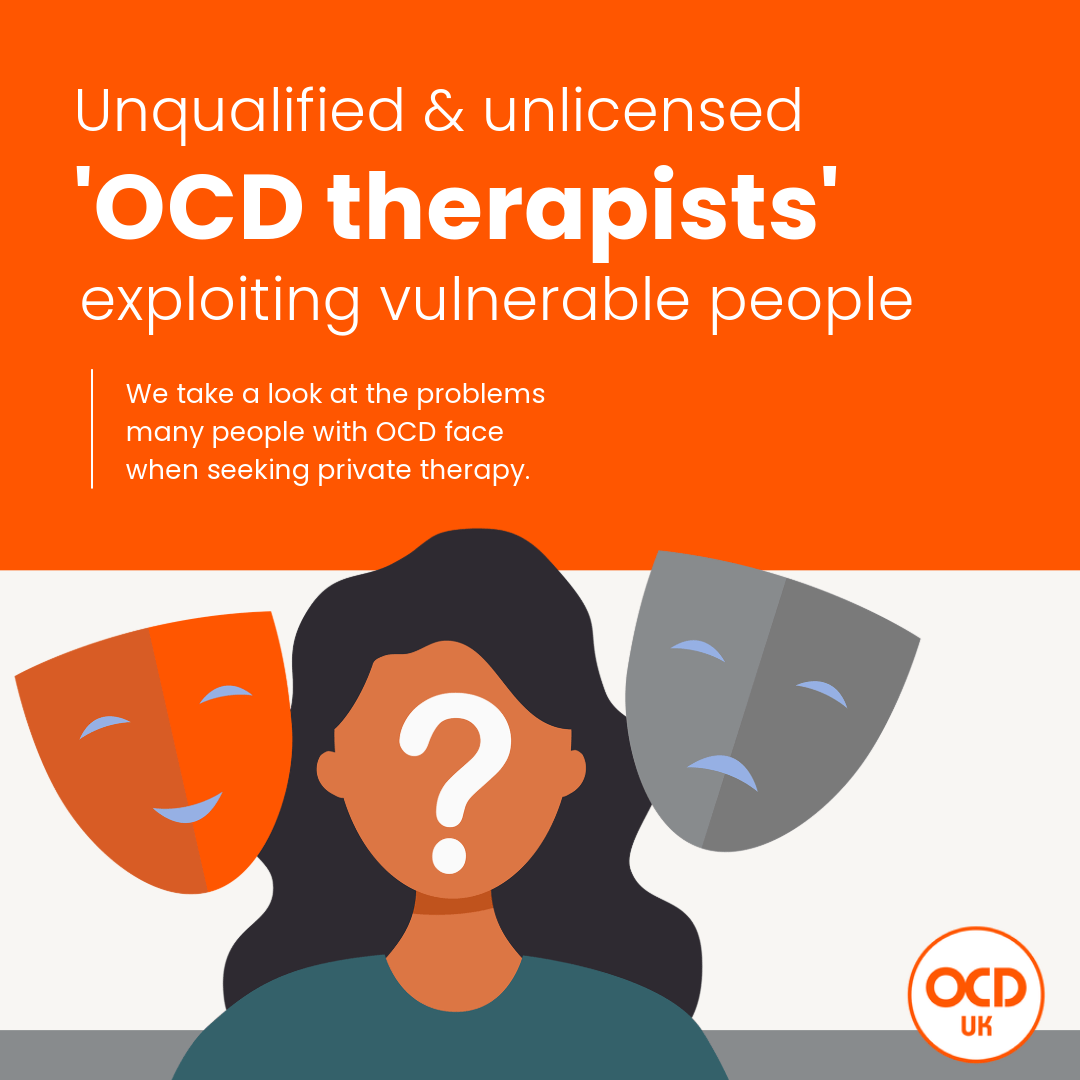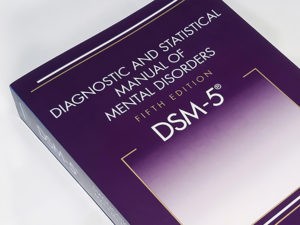
When working with patients, health professionals often refer to clinical diagnostic manuals to better understand the patient’s illness and potential treatment.
There are two main recognised diagnostic manuals commonly used around the world today. These are the International Classification of Diseases (ICD) and the Diagnostic and Statistical Manual of Mental Disorders (DSM) (the latest of which is pictured). Whilst both manuals generally tend to complement each other, there are differences in the descriptions they use.
You can read a summary of both the ICD and DSM on our clinical classification of OCD page. On this page we will summarise what both diagnostic manuals say about Obsessive-Compulsive Personality Disorder (OCPD).
In ICD-10, The World Health Organization uses the term Anankastic personality disorder which is categorised under the sub-category of Specific personality disorders (F60) which sits under a larger heading of ‘Disorders of adult personality and behaviour‘.
At present it states the following diagnostic criteria for Anankastic personality disorder (Code: F60.5):
Personality disorder characterized by feelings of doubt, perfectionism, excessive conscientiousness, checking and preoccupation with details, stubbornness, caution, and rigidity. There may be insistent and unwelcome thoughts or impulses that do not attain the severity of an obsessive-compulsive disorder.
Excl: obsessive-compulsive disorder
The ICD is currently under revision and the release date for the 11th Revision of the International Classification of Diseases (ICD-11) is planned for publication later in 2018.
At present the draft of ICD-11 it is not clear where OCPD will be listed. In the proposed revision, all personality disorder diagnoses will be removed and replaced by the single diagnosis ‘personality disorder’. Instead, there will be specifiers called prominent personality traits and the possibility to classify degrees of severity ranging from mild to severe based on the dysfunction in interpersonal relationships and everyday life of the patient.
It’s also being reviewed if OCPD should be listed under the broader category of Obsessive-compulsive or related disorders.
In DSM-5, Obsessive Compulsive Personality Disorder sits under its own sub-category ‘Cluster C Personality Disorders’ under the main category of Personality Disorders . In terms of the actual diagnostic criteria the DSM-5 lists the following:
- Avoidant Personality Disorder
- Dependent Personality Disorder
- Obsessive-Compulsive Personality Disorder
In terms of the actual diagnostic criteria the DSM-5 lists the following:
Diagnostic Criteria
301.4 (F60.5)
A pervasive pattern of preoccupation with orderliness, perfectionism, and mental and interpersonal control, at the expense of flexibility, openness, and efficiency, beginning by early adulthood and present in a variety of contexts, as indicated by four (or more) of the following:
1. Is preoccupied with details, rules, lists, order, organization, or schedules to the extent that the major point of the activity is lost.
2. Shows perfectionism that interferes with task completion (e.g., is unable to complete a project because his or her own overly strict standards are not met).
3. Is excessively devoted to work and productivity to the exclusion of leisure activities and friendships (not accounted for by obvious economic necessity).
4. Is overconscientious, scrupulous, and inflexible about matters of morality, ethics, or values (not accounted for by cultural or religious identification).
5. Is unable to discard worn-out or worthless objects even when they have no sentimental value.
6. Is reluctant to delegate tasks or to work with others unless they submit to exactly his or her way of doing things.
7. Adopts a miserly spending style toward both self and others; money is viewed as something to be hoarded for future catastrophes.
8. Shows rigidity and stubbornness.
Diagnostic Features
The essential feature of obsessive-compulsive personality disorder is a preoccupation with orderliness, perfectionism, and mental and interpersonal control, at the expense of flexibility, openness, and efficiency. This pattern begins by early adulthood and is present in a variety of contexts.
Individuals with obsessive-compulsive personality disorder attempt to maintain a sense of control through painstaking attention to rules, trivial details, procedures, lists, schedules, or form to the extent that the major point of the activity is lost (Criterion 1). They are excessively careful and prone to repetition, paying extraordinary attention to detail and repeatedly checking for possible mistakes. They are oblivious to the fact that other people tend to become very annoyed at the delays and inconveniences that result from this behavior. For example, when such individuals misplace a list of things to be done, they will spend an inordinate amount of time looking for the list rather than spending a few moments recreating it from memory and proceeding to accomplish the tasks. Time is poorly allocated, and the most important tasks are left to the last moment. The perfectionism and self-imposed high standards of performance cause significant dysfunction and distress in these individuals. They may become so involved in making every detail of a project absolutely perfect that the project is never finished (Criterion 2). For example, the completion of a written report is delayed by numerous time-consuming rewrites that all come up short of “perfection.” Deadlines are missed, and aspects of the individual’s life that are not the current focus of activity may fall into disarray.
Individuals with obsessive-compulsive personality disorder display excessive devotion to work and productivity to the exclusion of leisure activities and friendships (Criterion 3). The behavior is not accounted for by economic necessity. They often feel that they do not to take an evening or a weekend day off to go on an outing or to just relax. They may keep postponing a pleasurable activity, such as a vacation, so that it may never occur. When they do take time for leisure activities or vacations, they are very uncomfortable unless they have taken along something to work on so they do not “waste time.” There may be a great concentration on household chores (e.g., repeated excessive cleaning so that “one could eat off the floor”). If they spend time with friends, it is likely to be in some kind of formally organized activity (e.g., sports). Hobbies or recreational activities are approached as serious tasks requiring careful organization and hard work to master. The emphasis is on perfect performance. These individuals turn play into a structured task (e.g., correcting an infant for not putting rings on the post in the right order; telling a toddler to ride his or her tricycle a straight line; turning a baseball game into a harsh “lesson”).
Individuals with obsessive-compulsive personality disorder may be excessively conscientious, scrupulous and inflexible about matters of morality, ethics, or values (Criterion 4). They may force themselves and others to follow rigid moral principles and very strict standards of performance. They may also be mercilessly self-critical about their own mistakes. Individuals with this disorder are rigidly deferential to authority and rules and insist on quite literal compliance, with no rule bending for extenuating circumstances. For example, the individual will not lend a quarter to a friend who needs one to make a telephone call because “neither a borrower nor a lender be” or because it would be “bad” for the person’s character. These qualities should not be accounted for by the individual’s cultural or religious identification.
Individuals with this disorder may be unable to discard worn-our or worthless objects even when they have no sentimental value (Criterion 5). Often these individuals will admit to being “pack rats.” They regard discarding objects as wasteful because “you never know when you might need something” and will become upset if someone tries to get rid of the things they have saved. Their spouses or roommates may complain about the amount of space taken up by old parts, magazines, broken appliances, and so on.
Individuals with obsessive-compulsive personality disorder are reluctant to delegate tasks or to work with others (Criterion 6). They stubbornly and unreasonably insist that everything be done their way and that people conform to their way of doing things. They often give very detailed instructions about how things should be done (e.g., there is one and only one way to mow the lawn, wash the dishes, build a doghouse) and are surprised and irritated if others suggest creative alternatives. At other times they may reject offers of help even when behind schedule because they believe no one else can do it right.
Individuals with this disorder may be miserly and stingy and maintain a standard of living far below what they can afford, believing that spending must be tightly controlled to provide for future catastrophes (Criterion 7). Obsessive-compulsive personality disorder is characterized by rigidity and stubbornness (Criterion 8). Individuals with this disorder are so concerned about having things done the one “correct” way that they have trouble going along with anyone else’s ideas. These individuals plan ahead in meticulous detail and are unwilling to consider changes. Totally wrapped up in their own perspective, they have difficulty acknowledging the viewpoints of others. Friends and colleagues may become frustrated by this constant rigidity. Even when individuals with obsessive-compulsive personality disorder recognize that it may be in their interest to compromise, they may stubbornly refuse to do so, arguing that it is “the principle of the thing.’
Associated Features Supporting Diagnosis
When rules and established procedures do not dictate the correct answer, decision making may become a time-consuming, often painful process. Individuals with obsessive-compulsive personality disorder may have such difficulty deciding which tasks take priority or what is the best way of doing some particular task that they may never get started on anything. They are prone to become upset or angry in situations in which they are not able to maintain control of their physical or interpersonal environment, although the anger is typically not expressed directly. For example, an individual may be angry when service in a restaurant is poor, but instead of complaining to the management, the individual ruminates about how much to leave as a tip. On other occasions, anger may be expressed with righteous indignation over a seemingly minor matter. Individuals with this disorder may be especially attentive to their relative status in dominance-submission relationships and may display excessive deference to an authority they respect and excessive resistance to authority they do not respect.
Individuals with this disorder usually express affection in a highly controlled or stilted fashion and may be very uncomfortable in the presence of others who are emotionally expressive. Their everyday relationships have a formal and serious quality, and they may be stiff in situations in which others would smile and be happy (e.g., greeting a lover at the airport). They carefully hold themselves back until they are sure that whatever they say will be perfect. They may be preoccupied with logic and intellect, and intolerant of affective behavior in others. They often have difficulty expressing tender feelings, rarely paying compliments. Individuals with this disorder may experience occupational difficulties and distress, particularly
when confronted with new situations that demand flexibility and compromise.
Individuals with anxiety disorders, including generalized anxiety disorder, social anxiety disorder (social phobia), and specific phobias, and obsessive-compulsive disorder (OCD) have an increased likelihood of having a personality disturbance that meets criteria for obsessive-compulsive personality disorder. Even so, it appears that the majority of individuals with OCD do not have a pattern of behavior that meets criteria for this personality disorder. Many of the features of obsessive-compulsive personality disorder overlap with “type A” personality characteristics (e.g., preoccupation with work, competitiveness, time urgency), and these features may be present in people at risk for myocardial infarction. There may be an association between obsessive-compulsive personality disorder and depressive and bipolar disorders and eating disorders.
Prevalence
Obsessive-compulsive personality disorder is one of the most prevalent personality disorders in the general population, with estimated prevalence ranging from 2.1% to 7.9%.
Culture-Related Diagnostic Issues
In assessing an individual for obsessive-compulsive personality disorder, the clinician should not include those behaviors that reflect habits, customs, or interpersonal styles that are culturally sanctioned by the individual’s reference group. Certain cultures place substantial emphasis on work and productivity; the resulting behaviors in members of those societies need not be considered indications of obsessive-compulsive personality disorder.
Gender-Related Diagnostic Issues
In systematic studies, obsessive-compulsive personality disorder appears to be diagnosed about twice as often among males.
Differential Diagnosis
Obsessive-compulsive disorder. Despite the similarity in names, OCD is usually easily distinguished from obsessive-compulsive personality disorder by the presence of true obsessions and compulsions in OCD. When criteria for both obsessive-compulsive personality disorder and OCD are met, both diagnoses should be recorded.
Hoarding disorder. A diagnosis of hoarding disorder should be considered especially when hoarding is extreme (e.g., accumulated stacks of worthless objects present a fire hazard and make it difficult for others to walk through the house). When criteria for both obsessive-compulsive personality disorder and hoarding disorder are met, both diagnoses should be recorded.
What to read next:
Additional Reading:
-
International Classification of Diseases (External Website)
-
Diagnostic and Statistical Manual of Mental Disorders (External Website)
-
ICD-10 (2016) (External Website)
-
ICD-11 (Draft) (External Website)
Disclaimer: This article is for information only and should not be used for the diagnosis or treatment of Obsessive-Compulsive Disorder or any other medical condition. OCD-UK have taken all reasonable care in compiling this information, but always recommend consulting a doctor or other suitably qualified health professional for diagnosis and treatment of Obsessive-Compulsive Disorder or any other medical condition.


